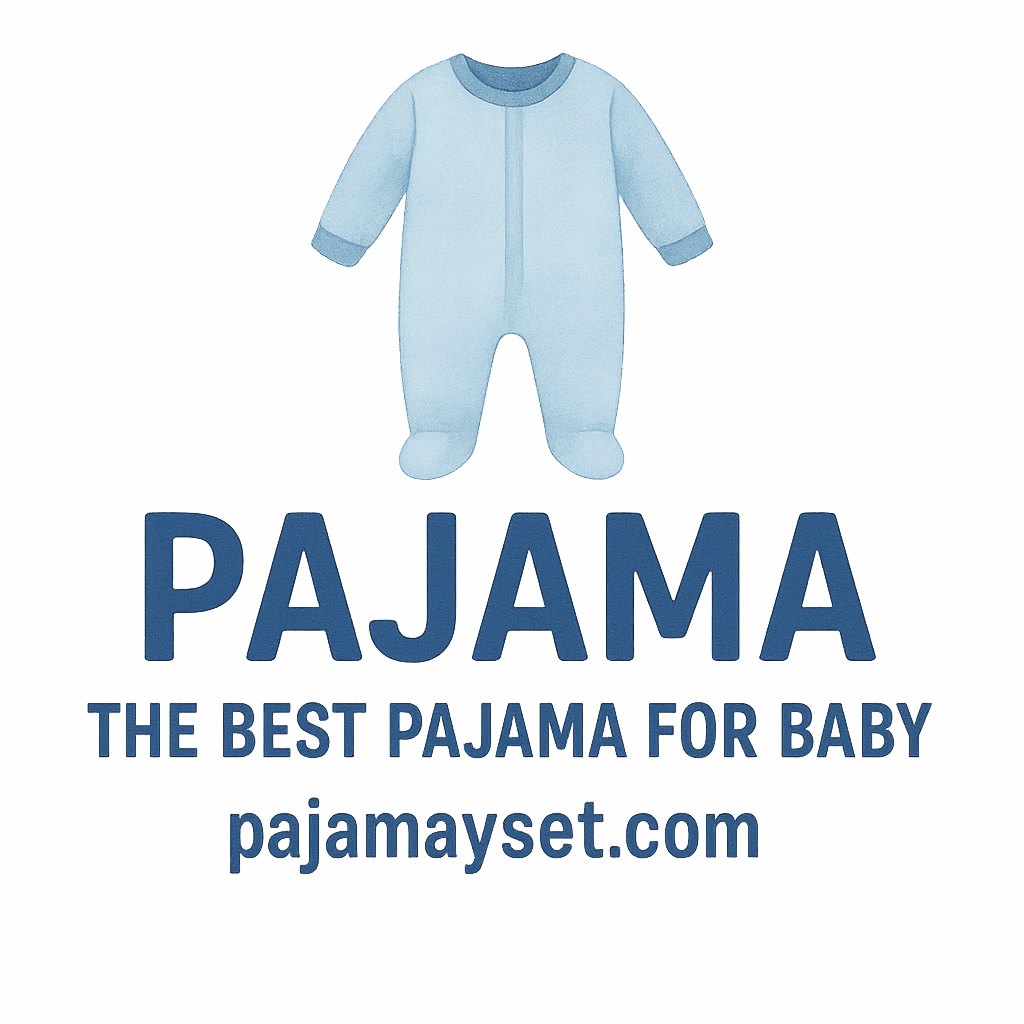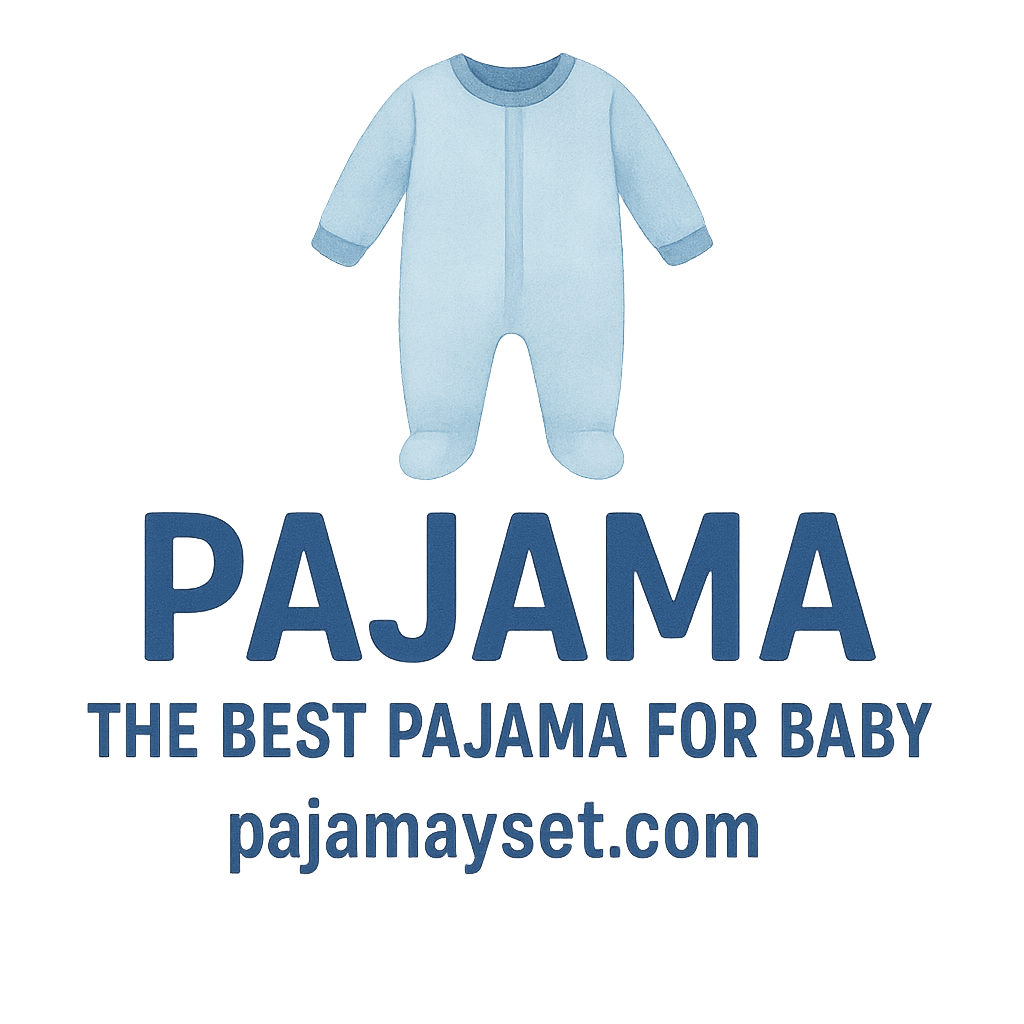Introduction
As a new parent, there are countless things to think about when it comes to your baby’s safety. From choosing the right car seat to making sure their crib is safe, the list never seems to end. But one important aspect that often gets overlooked is your baby’s sleepwear – their pajamas. Pajamas might seem like a simple item, but the safety features of baby pajamas can make all the difference in ensuring your little one is comfortable, cozy, and most importantly, safe.
This article covers 10 Pajama Safety Tips Every New Parent Should Know, so you can make informed decisions when choosing the best sleepwear for your baby. Whether you’re looking for soft, breathable fabrics or avoiding choking hazards, these tips will help you make the best choices for your little one.
Why Pajama Safety Matters for Your Baby
You might be wondering, why do pajamas matter so much when it comes to safety? Well, babies spend a lot of time sleeping, and the right pajama can play a crucial role in their overall comfort and well-being.
Pajamas not only keep your baby warm but also protect their sensitive skin. Choosing pajamas made from safe materials can prevent irritation, allergic reactions, or even worse, accidents like choking or suffocation. It’s important to always look for safety features that help regulate your baby’s body temperature and avoid any unnecessary risks.
Understanding Pajama Materials
Before diving into the pajama safety tips, it’s essential to understand the types of materials used in baby pajamas. Babies have extremely sensitive skin, and some fabrics may cause discomfort or irritation. Therefore, you should choose materials that are soft, breathable, and gentle on your baby’s skin.
When selecting pajamas, make sure the fabric is breathable enough to regulate your baby’s body temperature. If you’re unsure about which fabric is best for your baby, check out Pajama Materials for more guidance.
Tip #1: Choose Soft, Breathable Fabrics
The first rule of pajama safety is to always choose soft, breathable fabrics. Babies’ skin is delicate, and rough fabrics can cause irritation or rashes. Materials like cotton are popular for their softness and breathability. Organic cotton is even better, as it’s gentle and free from harmful chemicals.
Always check the fabric label to ensure the pajamas are made from natural fibers that allow air to circulate, preventing your baby from overheating. Avoid synthetic fabrics that may trap heat or moisture against your baby’s skin.
Tip #2: Prioritize Safety Over Style
It can be tempting to buy those cute pajamas with fun designs, but when it comes to baby sleepwear, safety should always come first. Pajamas with excessive decorations like buttons, bows, or ribbons might look adorable, but they could pose choking hazards. It’s essential to select simple, functional pajamas without these potential dangers.
Instead, opt for functional designs like breathable baby pajamas that are comfortable and safe. If you do prefer more stylish options, look for embroidery or prints that are securely attached to the fabric.
Tip #3: Avoid Pajamas with Loose Fabrics
Loose or baggy pajamas can be a safety hazard, as they may get caught in something while your baby is moving around. Look for pajamas that fit snugly around the legs, arms, and neck. Tight-fitting pajamas are recommended, but they should not restrict movement or breathing.
You should also avoid pajamas with excessive loose fabrics that could potentially become tangled in crib rails or other household objects. Choosing pajamas that are designed with safe fasteners and snug cuffs will help prevent any accidents.
Tip #4: Ensure Pajamas Have No Choking Hazards
Choking is a serious concern for parents, and even the smallest buttons or embellishments can be a hazard. Always double-check your baby’s pajamas for loose buttons or small items that could be a potential choking risk.
If your baby’s pajamas have any buttons, make sure they are securely stitched and cannot easily be pulled off. Pajama Safety is critical, and this is one of the most important aspects to consider when choosing baby sleepwear.

Tip #5: Consider the Temperature and Season
Your baby’s pajamas should match the season and the temperature of the room they are sleeping in. In colder months, opt for flannel or fleece pajamas to keep your baby warm, while light cotton pajamas are perfect for warmer weather.
To help regulate your baby’s body temperature, make sure to select pajamas that are appropriate for the seasonal weather. Keep in mind that overheating can be just as dangerous as being too cold, so always dress your baby in layers that you can remove if necessary.
Tip #6: Opt for Footed Pajamas for Added Warmth
Footed pajamas are a great option, especially for newborns and younger babies. They keep your baby’s feet warm throughout the night, eliminating the need for separate socks or slippers. Footed pajamas also help prevent your baby from accidentally kicking off their blankets.
If you’re looking for safe and warm pajamas, consider selecting footed pajamas with zippers instead of snaps, as zippers are more secure and less likely to come undone.
Tip #7: Select Pajamas with Safe Fasteners
Fasteners, whether they’re buttons, snaps, or zippers, should be safe and easy to use. Ensure that the fasteners on your baby’s pajamas are securely attached and cannot be pulled off. It’s always best to choose pajamas with zipper closures as they are easier to secure and less likely to come undone during the night.
Check out Pajama Fasteners for more on choosing safe fasteners for your baby’s pajamas.
Tip #8: Make Sure Pajamas Are the Right Size
Wearing pajamas that are too tight or too loose can cause discomfort, and in some cases, it can even be unsafe. Pajamas that are too tight may restrict your baby’s movement, while loose pajamas can cause the fabric to bunch up, potentially creating a suffocation hazard.
Always check the size guide when buying pajamas to ensure they fit your baby perfectly. Also, be mindful of the fact that babies grow quickly, so make sure to buy pajamas that leave room for growth.
Tip #9: Look for Pajamas with Non-Toxic Dyes
Babies are more sensitive to chemicals, so it’s important to choose pajamas that are dyed with non-toxic, baby-safe dyes. Many manufacturers use chemicals in their fabric dyes that can irritate your baby’s skin or even cause allergic reactions.
When shopping for pajamas, look for items that are labeled safe and free from harmful chemicals. This ensures your baby is sleeping in a safe environment without exposure to potentially harmful substances.
Tip #10: Ensure Pajamas Are Fire-Resistant
In many countries, children’s sleepwear is required by law to be fire-resistant. Always check that your baby’s pajamas are labeled as flame-resistant if they are made from synthetic materials.
While cotton is naturally flame-resistant, some pajamas are treated with flame-retardant chemicals to meet safety standards. Always make sure that your baby’s pajamas meet the necessary safety standards, and avoid pajamas made from highly flammable materials.
Conclusion
Choosing the right pajamas for your baby is not just about comfort; it’s about safety. By following these 10 Pajama Safety Tips, you can ensure that your little one sleeps soundly and safely through the night. Whether you’re selecting soft fabrics, ensuring the fit is right, or choosing pajamas with safe fasteners, every detail matters. Keep your baby’s safety a priority, and you’ll have peace of mind knowing they are well-protected.
7 FAQs About Pajama Safety for Babies
1. What type of fabric is safest for baby pajamas?
The safest fabrics for baby pajamas are cotton and organic cotton. These materials are breathable, soft, and gentle on your baby’s skin, making them ideal for all-night comfort.
2. How can I tell if a pajama has a choking hazard?
Check the pajamas for any loose buttons, ribbons, or embellishments that could easily detach and pose a choking risk. Always opt for designs without small, detachable parts.
3. Are footed pajamas safer than regular pajamas?
Yes, footed pajamas help keep your baby’s feet warm and eliminate the risk of losing socks during sleep. They also help provide extra comfort and warmth.
4. Can I use regular pajamas for my newborn?
It’s better to use newborn-specific pajamas that are designed with safety features such as snug cuffs and soft fabrics to prevent any discomfort.
5. What should I look for in terms of pajamas for different seasons?
For colder months, choose flannel or fleece pajamas, and for warmer weather, opt for lightweight cotton pajamas to keep your baby comfortable.
6. How often should I change my baby’s pajamas?
It’s a good idea to change your baby’s pajamas regularly to ensure they stay clean and comfortable. If your baby sweats or has a diaper leak, it’s time for a fresh pair.
7. Are flame-resistant pajamas safe for babies?
Yes, flame-resistant pajamas are safe for babies as long as they meet the required safety standards. However, avoid pajamas made from materials that are highly flammable.


